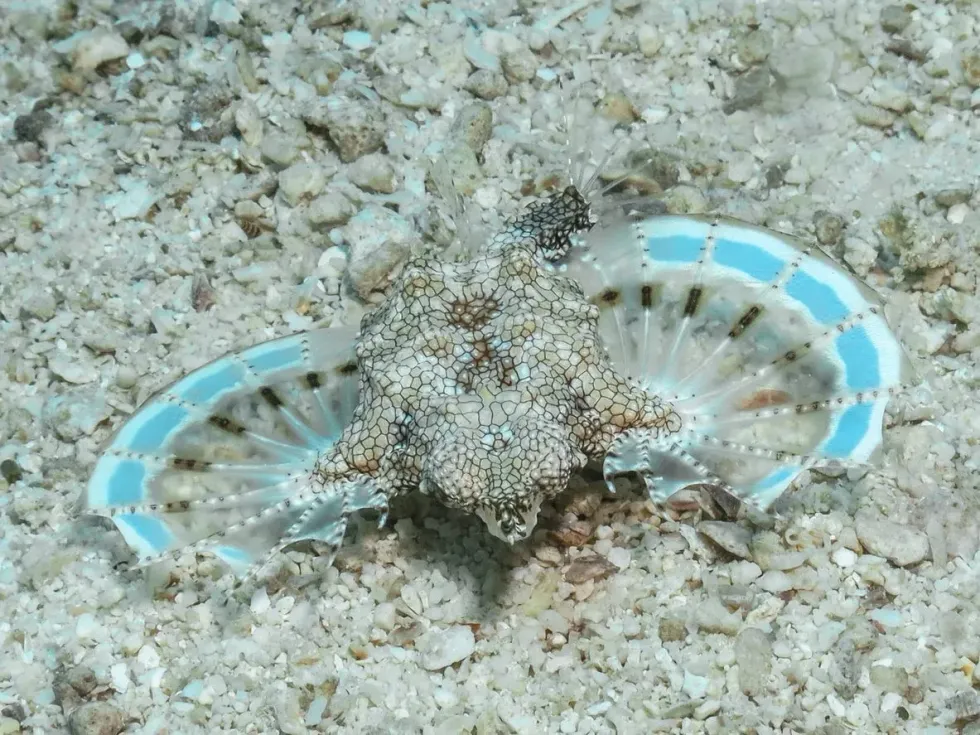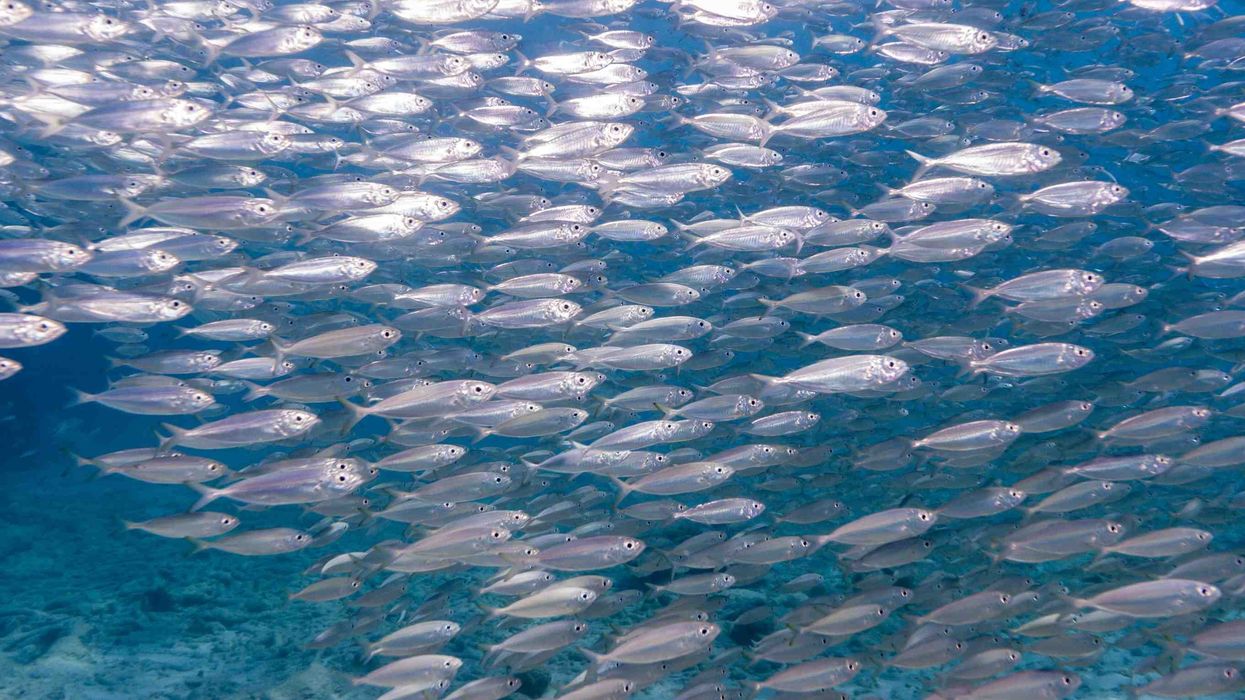Tropical oceans and those like the indo pacific are home to numerous sea creatures. These creatures can be as large as whales or as small as a sea moth.
The seamoth eurypegasus comes from the family pegasus which are in the order syngnathiformes. A very interesting fact about this marine creature is that it's named after the greek creature pegasus, mainly because of its snout and wing-like flaps. These sea moths are called dragon fish in traditional Chinese.
These dragonfish have amazing biology and that's where they are different from other fish. They have a very special organ called pelvic fins which does a lot of important work for this species.
There is a lot of controversy regarding the conversation status of this fish that likes to live in sandy bottoms. They are considered Vulnerable by the IUCN, however, they are considered Not Extinct by other organizations.
Regardless, it's pretty clear that this species is present in very few numbers.
The search for them in tropical oceans can be a very difficult task, given their ability to live at the deeper end of the sea. To discover other genera of fish, make sure to check out our other articles on the pacific salmon and the humphead wrasse.
Seamoth Fish Interesting Facts
What type of animal is a seamoth fish?
This dragonfish with weird-looking pectoral fins may not be a new subject for someone who likes to know about life under our oceans. They are also known as sea moths and there are around five species of them.
These sea creatures are a species of small marine fish from the family pegasidae and they come under the order pegasiformes. They often stay deep underwater, at a considerable range of 8-115 m in the sea, and they hunt smaller fish.
What class of animal does a seamoth fish belong to?
These fish from indo pacific oceans are a family of the small marine fish clan and they like living on the sandy bottoms of the sea. They are from the class Actinopterygii and phylum Chordata.
How many seamoth fish are there in the world?
These fish are present in Pacific and Australian waters. Seamoths are often used in traditional Chinese medicine and therefore their population at present is not in good shape.
Cousins and neighboring species of this dragon fish, including sea horses and pipefish, are all known to have healing properties and are widely used in Chinese medicine. Thus, the population of dragon fish is a matter of concern and they are listed under the red list by IUCN.
Where does a seamoth fish live?
The sea moth or dragon fish is only found in coastal tropical waters. They are not very famous for being in the aquarium as some find their body flattened and bony and the fish is known to be delicate when it is in an aquarium environment.
The family of the seamoth has almost two genera and five species and they are found in the Indo-west Pacific oceans. The seamoth Eurypegasus draconis is named after the Greek god of the sea.
What is a seamoth fish's habitat?
The seamoth Eurypegasus draconis is very smart when it comes to choosing its habitat. They are not used to a wide variety of habitat conditions like their distant cousins such as the teleost fish.
This dragon fish, member of the pegasus family clan, is adapted to some wide habitat conditions. They are used to cold environments that can go up to 10-20 F (11 C). They prefer sandy bottoms and this dragonfish can live up to a depth of 27000 ft (8000 m).
Who does the seamoth fish live with?
The sea moth is not a very dangerous fish and they generally only prey on fish that are smaller than them. Thus we can expect the seamoth Eurypegasus draconis to live with other fish such as black dragonfish or the black molly.
How long does a seamoth fish live?
Not much is known about the life cycle of these seamoths or dragonfish. It is known, however, that once dragonfish reach maturity they go very deep in the ocean and spend the rest of their lives there.
How do they reproduce?
The reason we don't know much about sea moths Eurypegasus draconis is that they live in very deep waters. Studies say that these fish with pelvic fins and tail plates reproduce by a method called spawning.
The female sea moth releases eggs in the water and then they get fertilized by a suitable seamoth male. The eggs float until they hatch and then newborns are left to defend themselves. The dragonfish babies are not provided with any parental care.
What is their conservation status?
Seamoths, Eurypegasus draconis, are under the red list, listed as Vulnerable by IUCN and Non Extinct by all the other marine life communities.
Seamoth Fish Fun Facts
What does a seamoth fish look like?
Seamoths are known for their weird and funny look and that's also the reason they were named pegasus. Dragonfish, otherwise known as seamoths, have pectoral fins to help them swim deeper. They have bony plates and their fin has a wing-like structure.
Their fin is very useful for catching fish or while in search of prey. They have flattened bodies with a tube-like mouth to suck worms. Their pelvic fins or pectoral fin are very large.
How cute are they?
The Pegasus is a very cute and adorable sea creature.
How do they communicate?
Seamoths communicate through light-emitting cells present in their body.
How big is a seamoth fish?
This member of the pegasus family is a little bigger than a round goby. A seamoth size is twice as big as an anglerfish.
How fast can a seamoth fish swim?
The seamoth has fins attached to its body, so it can swim very fast.
How much does a seamoth fish weigh?
These dragon fish weigh around 0.4-0.5 oz (14-16 g).
What are the male and female names of the species?
Both genders have the same name.
What would you call a baby seamoth fish?
A baby fish is known as fry.
What do they eat?
The diet for dragon fish is mainly small creatures, copepods, and isopods.
Are they dangerous?
No, they are not dangerous to humans.
Would they make a good pet?
It is not ideal to keep a pegasus as a pet given they have a very small population.
Did you know...
The pegasus family fish don't have teeth.
Types of Seamoth
There are around five species of pegasus present.
Why are they called seamoths?
They got their name from Greek mythology, from the god of the sea.
Why do Seamoths shed?
They have bony plates all across their body, which they shed to get rid of parasites.
Here at Kidadl, we have carefully created lots of interesting family-friendly animal facts for everyone to discover! Learn more about some other fish from our toadfish fun facts and monkfish facts for kids.
You can even occupy yourself at home by coloring in one of our free printable sea moth coloring pages.
Second image by Silke Baron.









